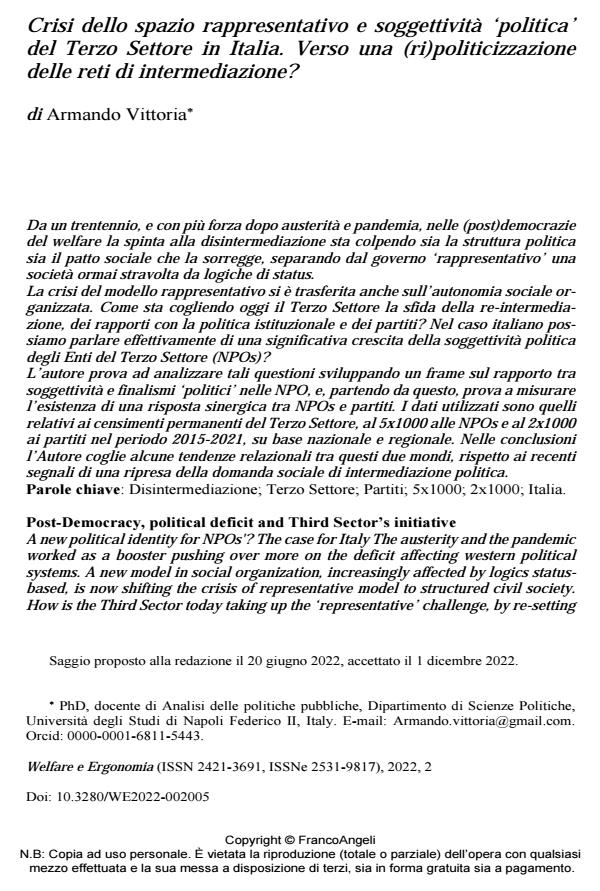Post-Democracy, political deficit and Third Sector’s initiative
Journal title WELFARE E ERGONOMIA
Author/s Armando Vittoria
Publishing Year 2023 Issue 2022/2
Language Italian Pages 14 P. 59-72 File size 308 KB
DOI 10.3280/WE2022-002005
DOI is like a bar code for intellectual property: to have more infomation
click here
Below, you can see the article first page
If you want to buy this article in PDF format, you can do it, following the instructions to buy download credits

FrancoAngeli is member of Publishers International Linking Association, Inc (PILA), a not-for-profit association which run the CrossRef service enabling links to and from online scholarly content.
A new political identity for NPOs'? The case for Italy The austerity and the pan-demic worked as a booster pushing over more on the deficit affecting western po-litical systems. A new model in social organization, increasingly affected by logics status-based, is now shifting the crisis of representative model to structured civil society. How is the Third Sector today taking up the ‘representative’ chal-lenge, by re-setting its relations with party politics? Considering the case for Ita-ly, may we consider any significant growth in NPOs’ political identity? The Author tries to address these issues by developing a frame about NPOs’ or-ganizational trends in representative space and about their ‘political’ finalisms. The research design develops data about NPO’s permanent censuses coming from ISTAT (Italian national statistical institute), as well those regarding public fund-ing to NPOs (5x1000) and to parties (2x1000) made by citizens as taxpayers. In the findings, the Author captures some relational tendencies between these two worlds, as an emerging strategy of collaborative mobilization in representative space.
Keywords: Post-democracy; Democratic deficit; Parties; Third Sector; NPOs; Ita-ly.
Armando Vittoria, Crisi dello spazio rappresentativo e soggettività ‘politica’ del Terzo Settore in Italia. Verso una (ri)politicizzazione delle reti di intermediazione? in "WELFARE E ERGONOMIA" 2/2022, pp 59-72, DOI: 10.3280/WE2022-002005